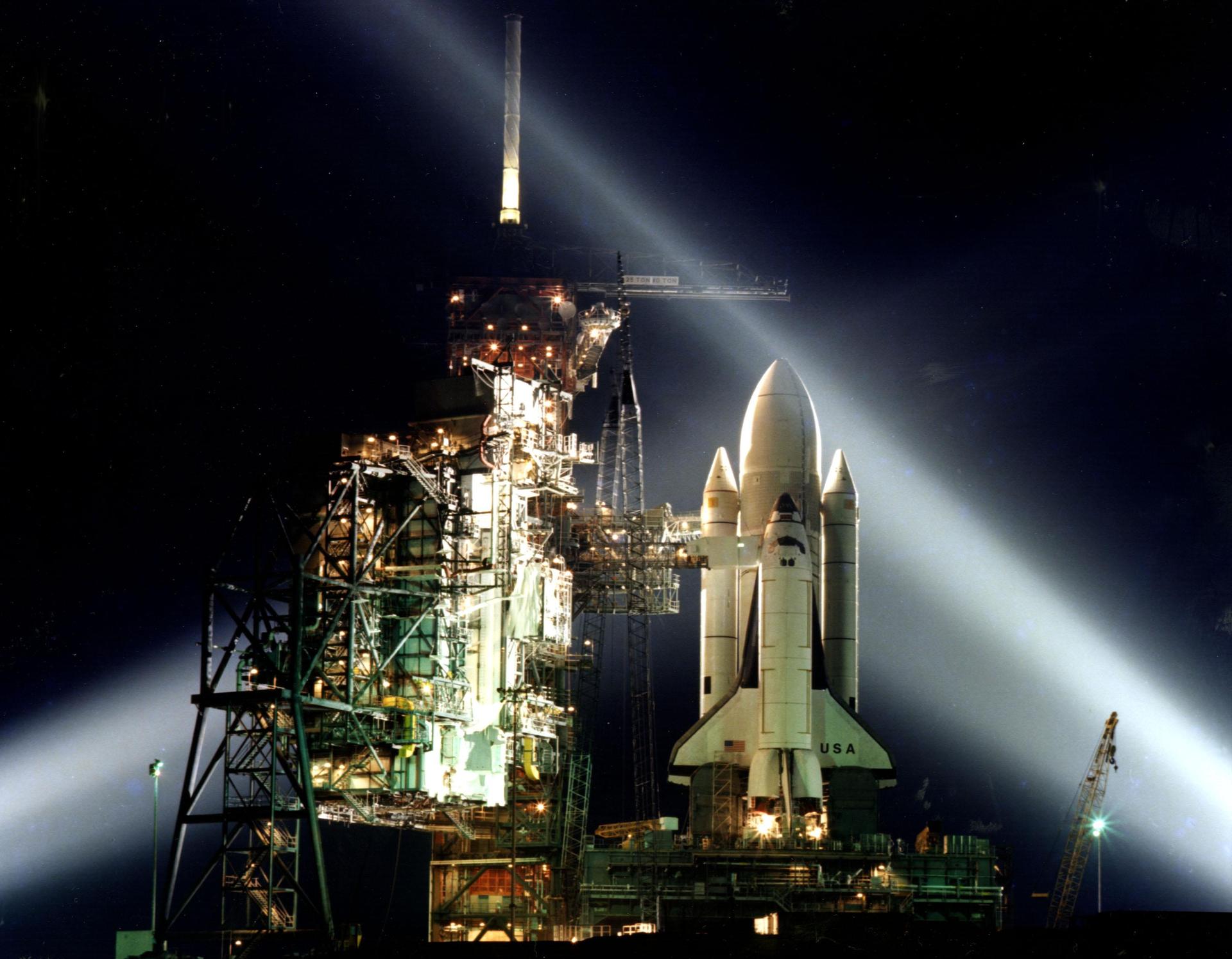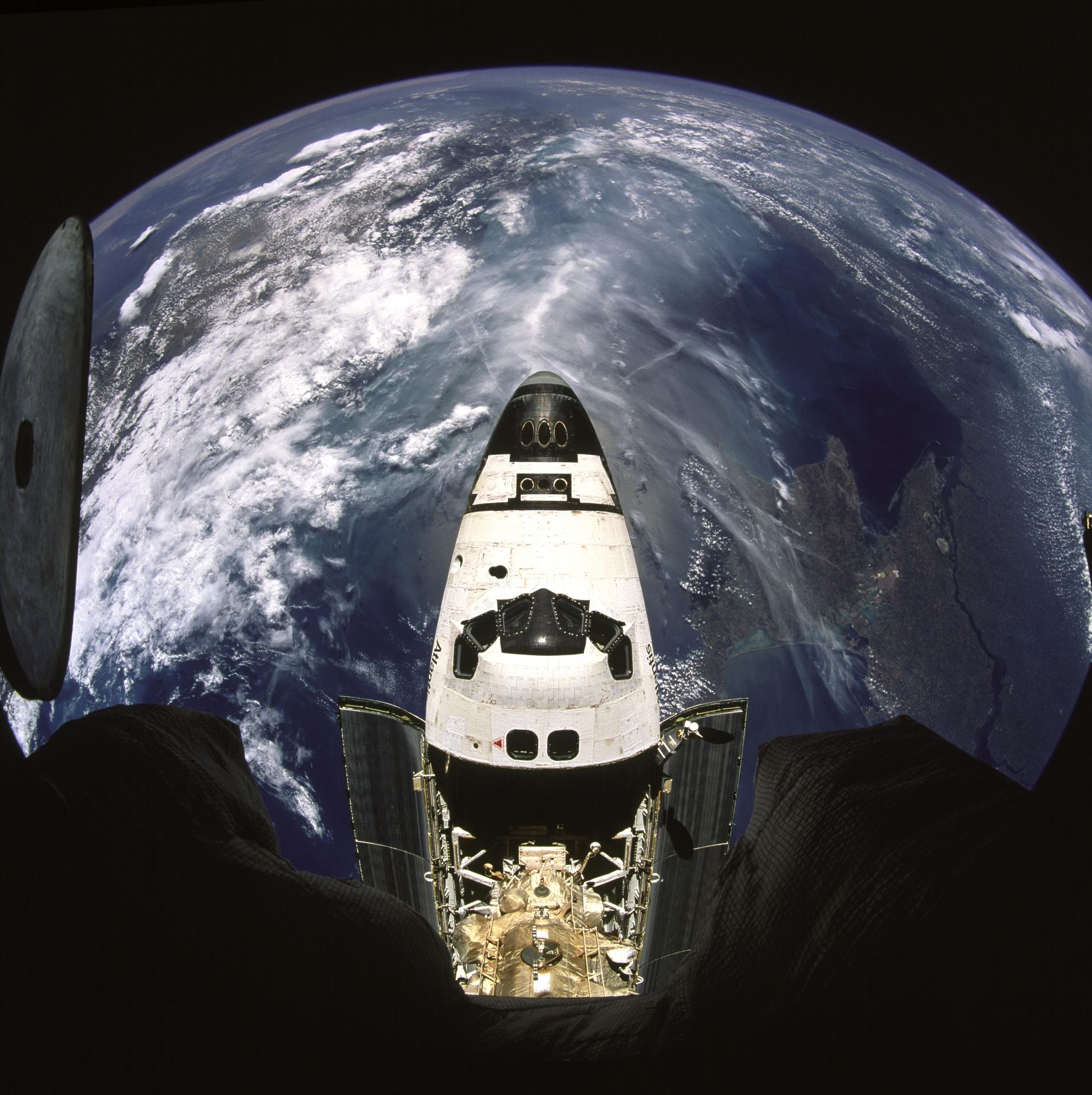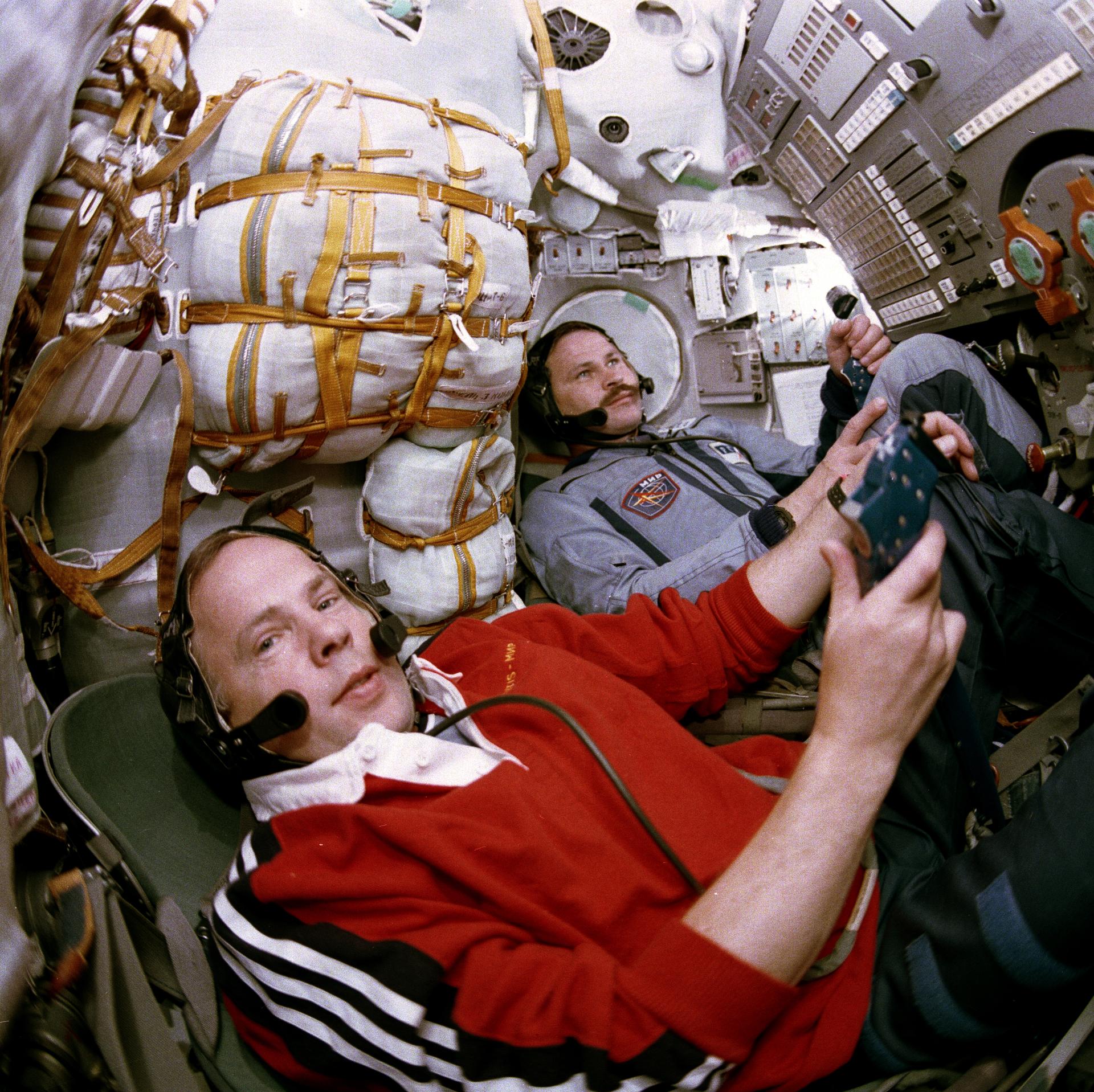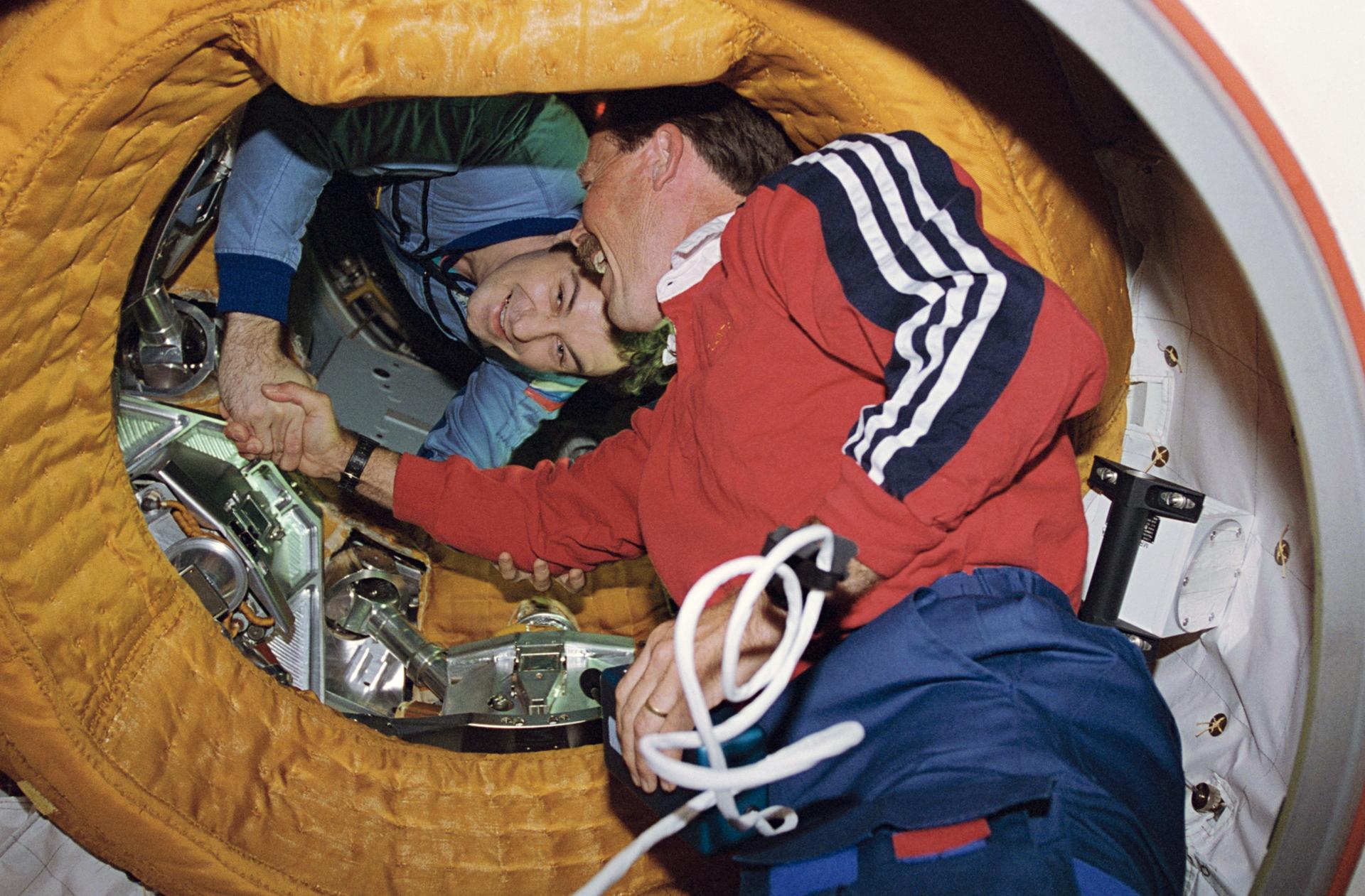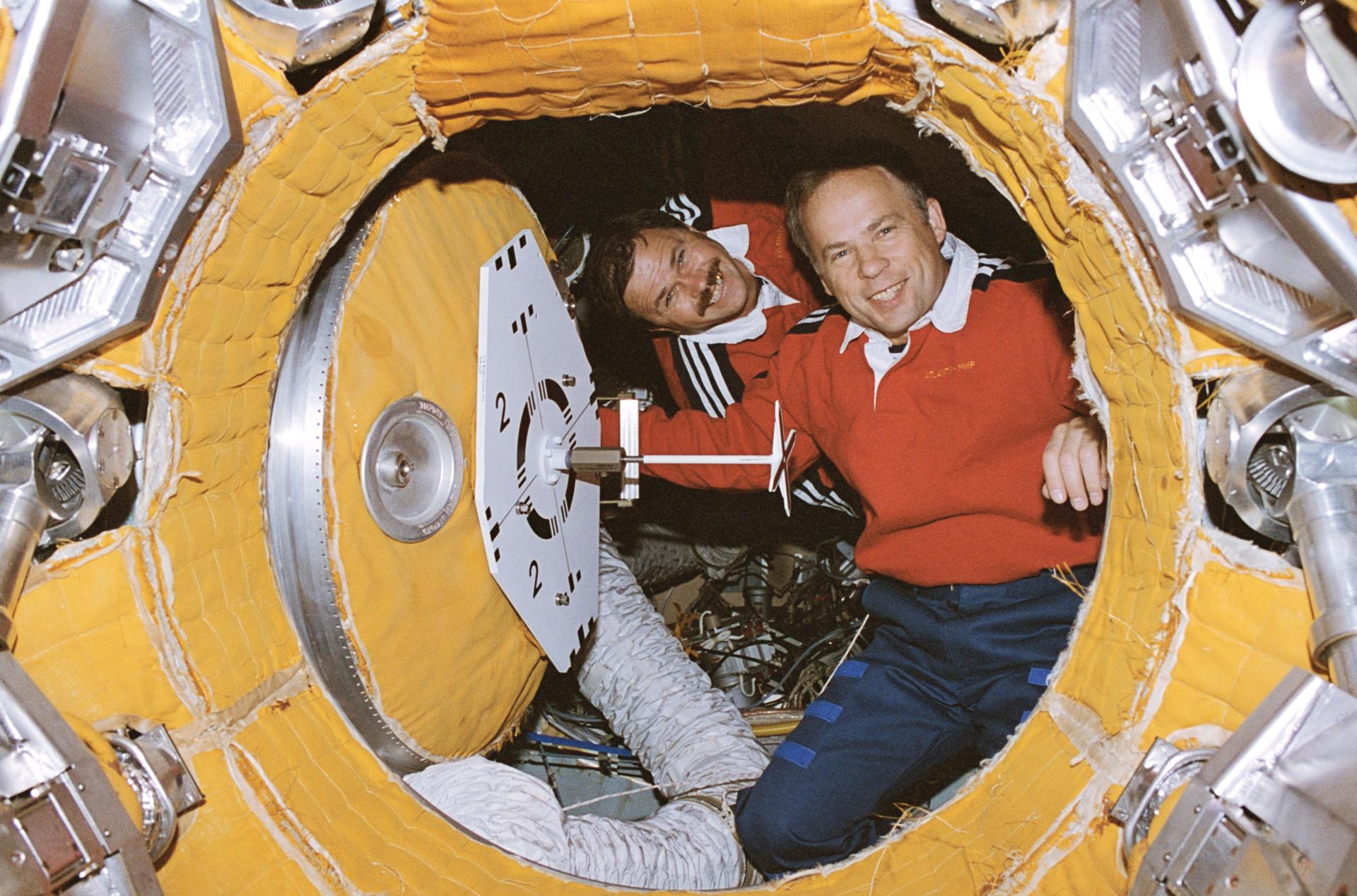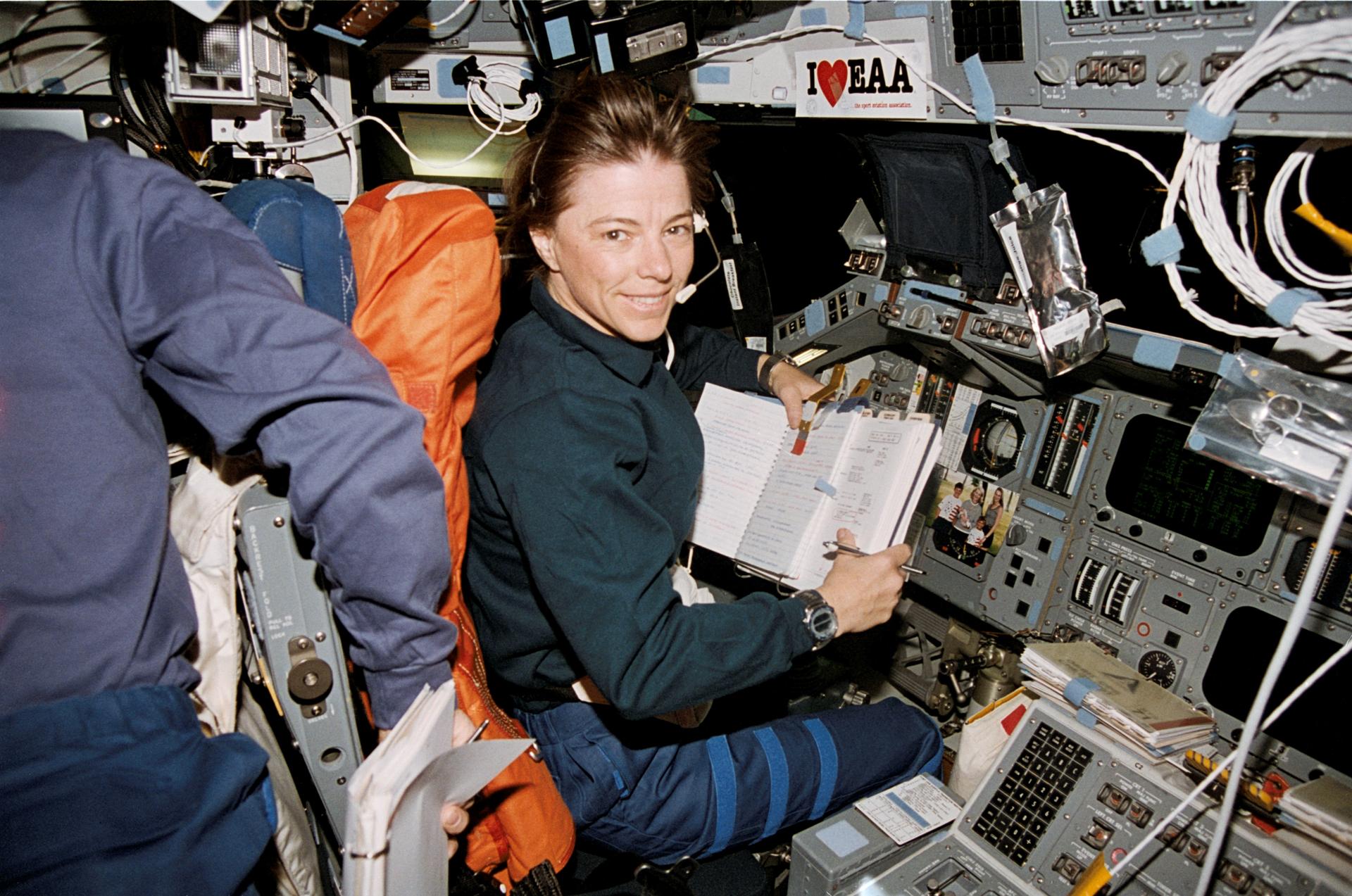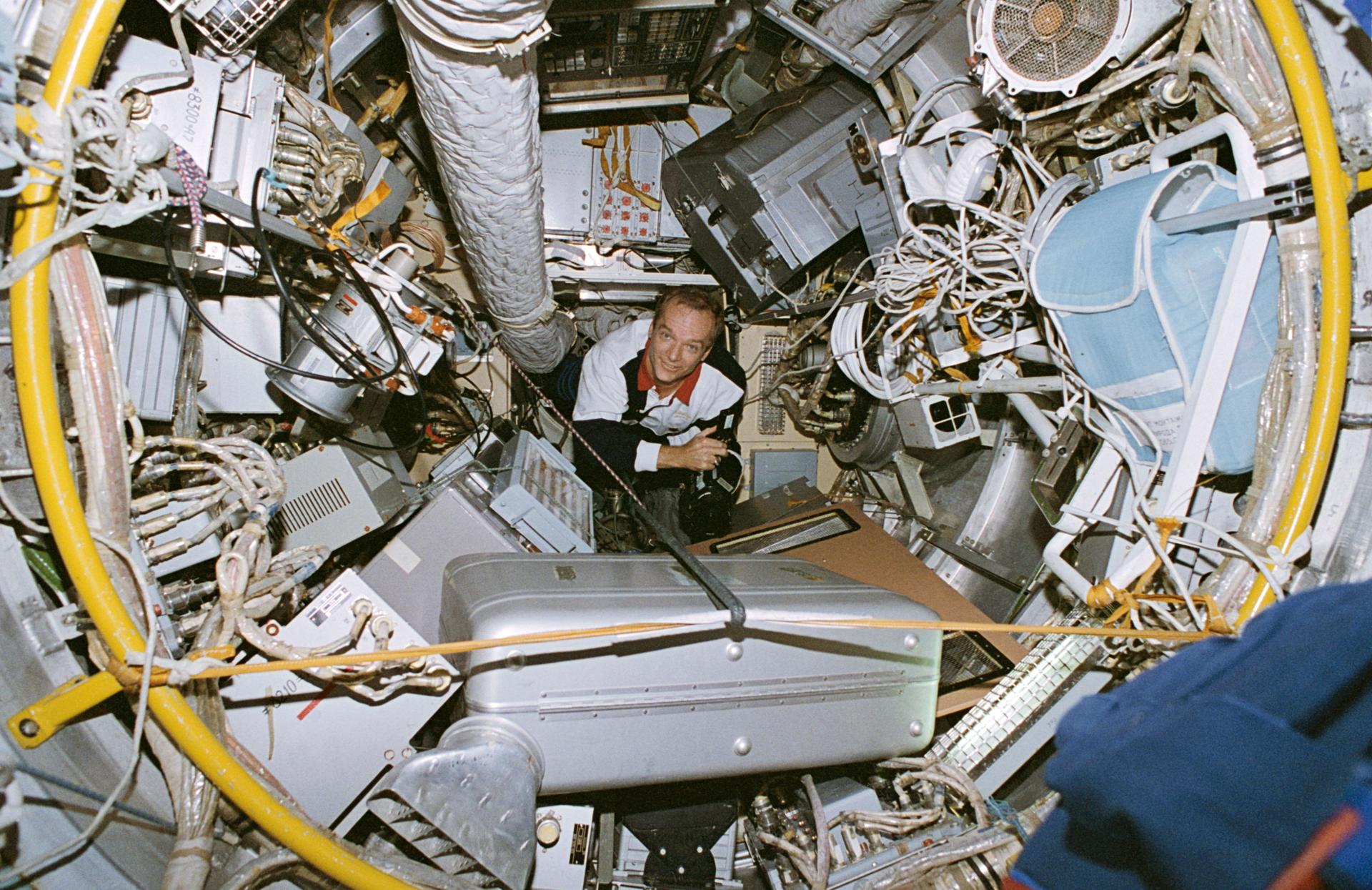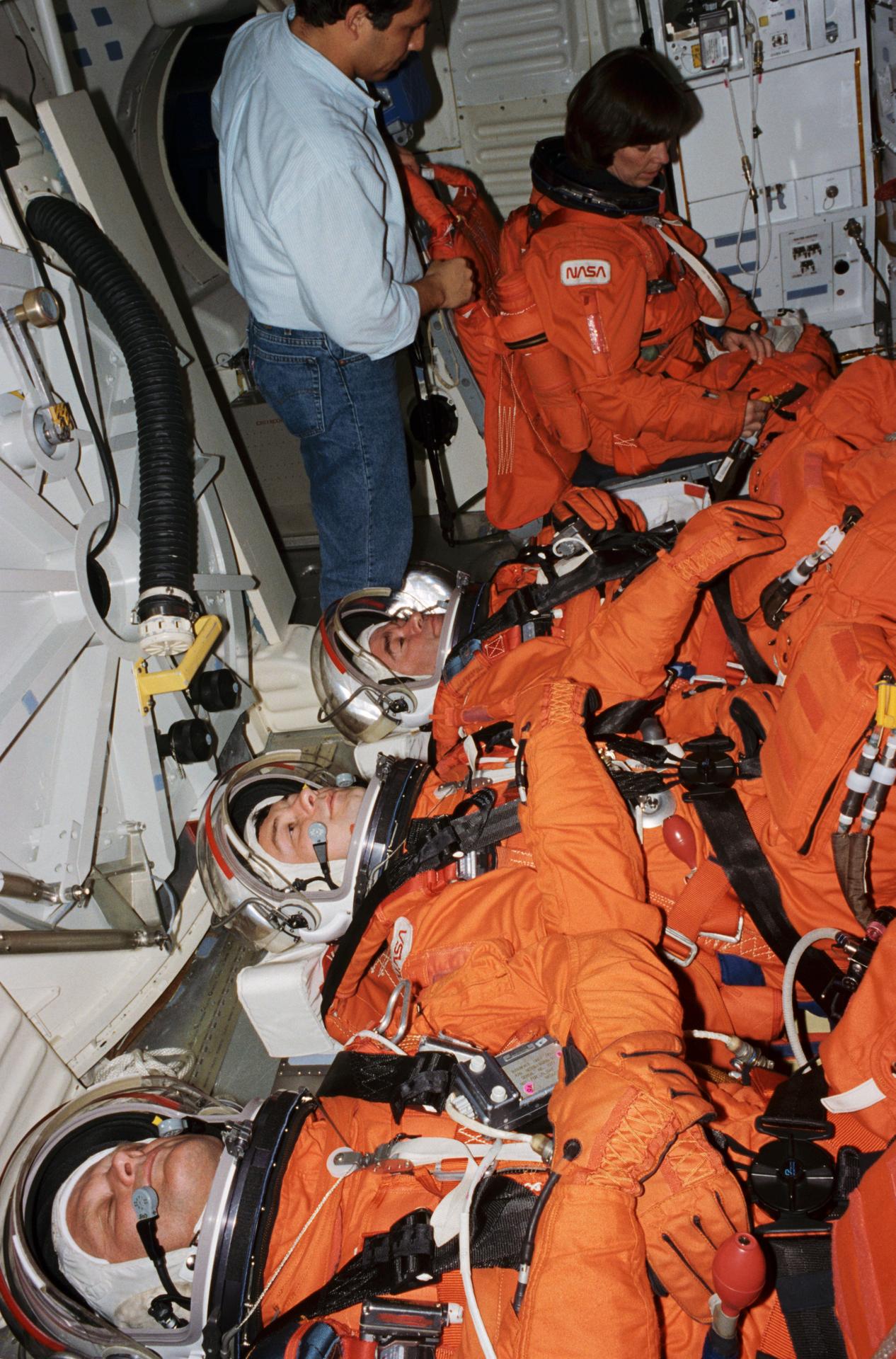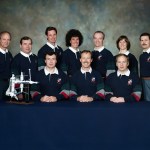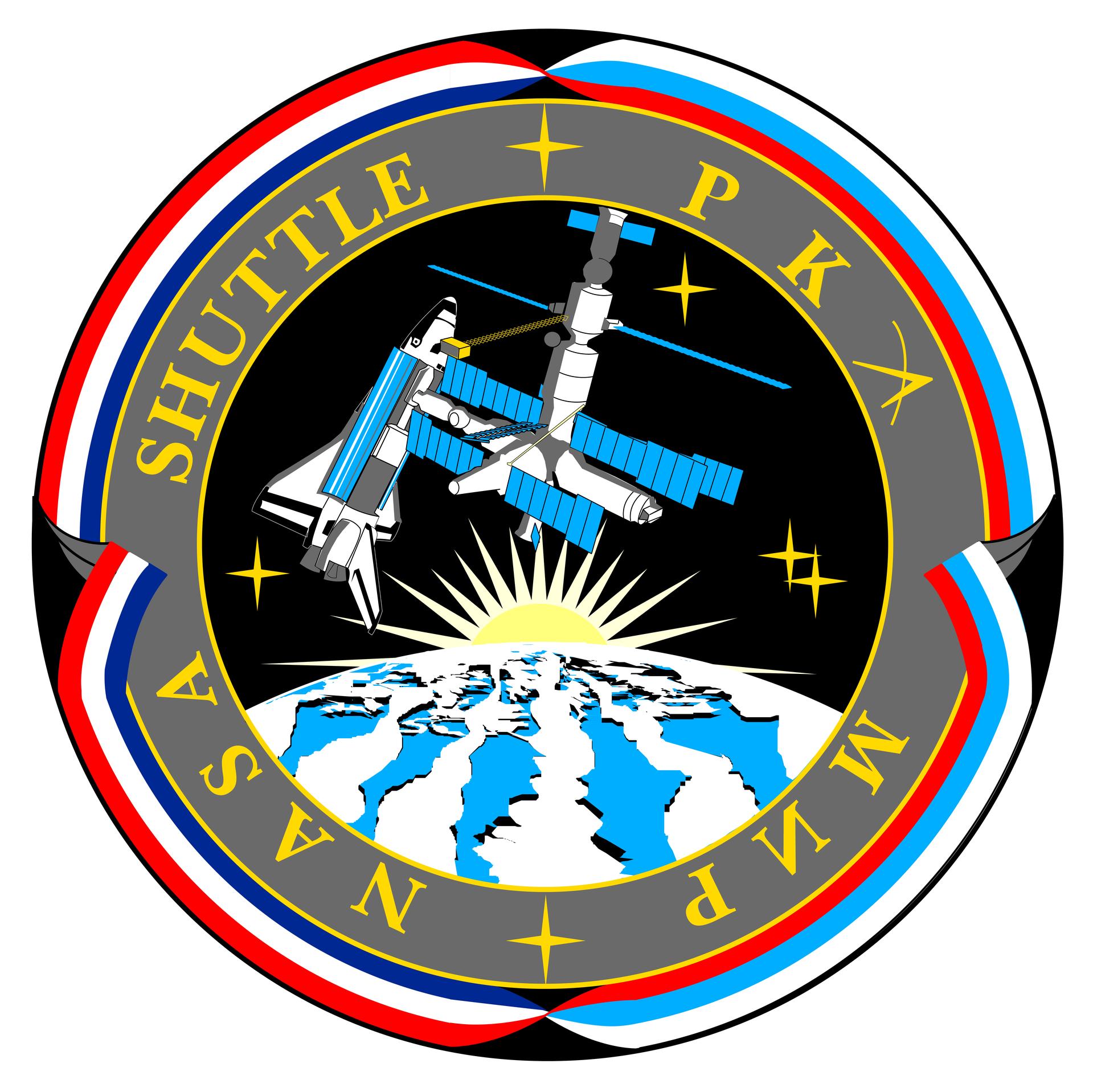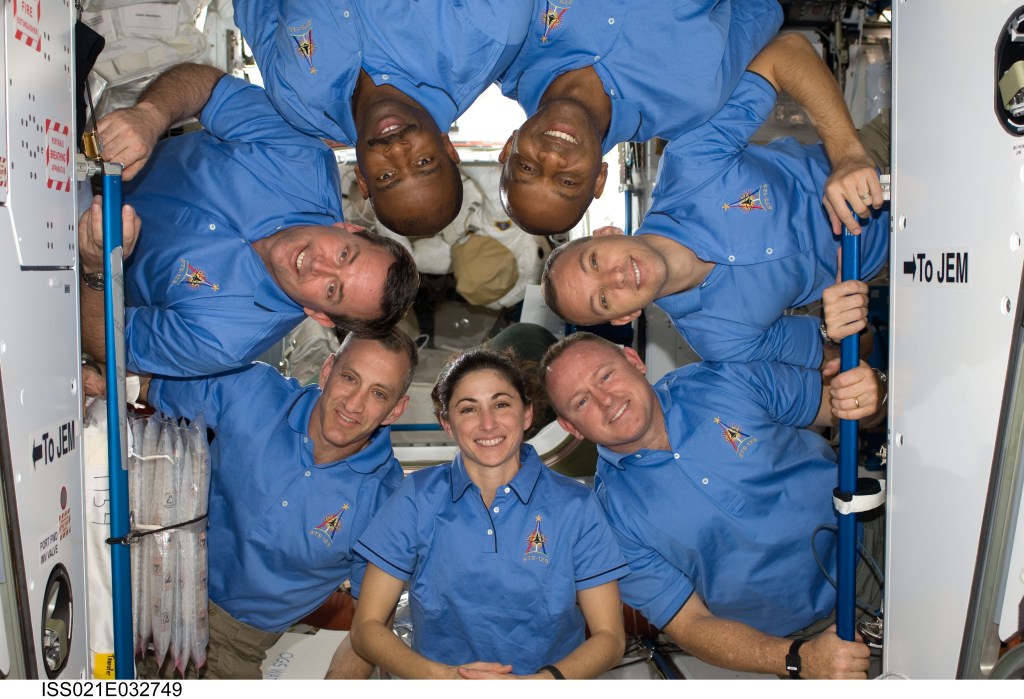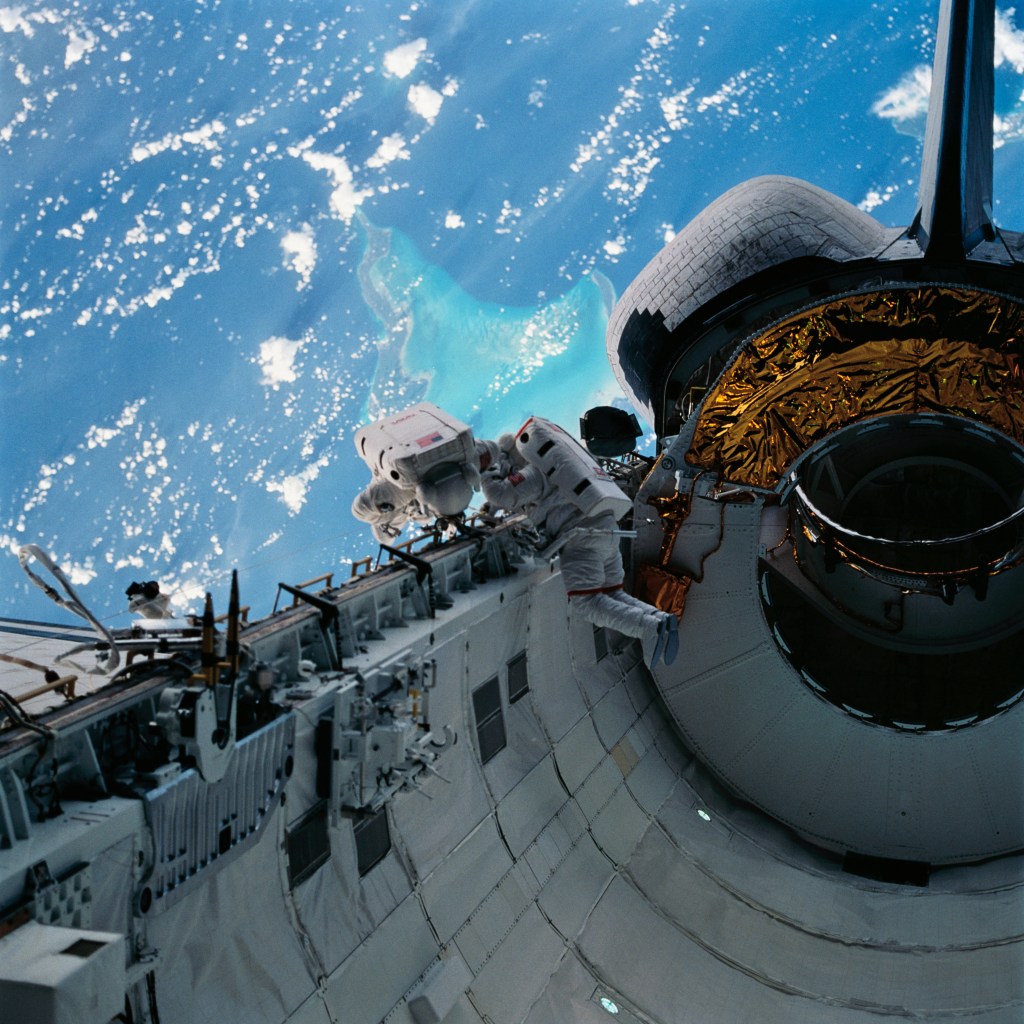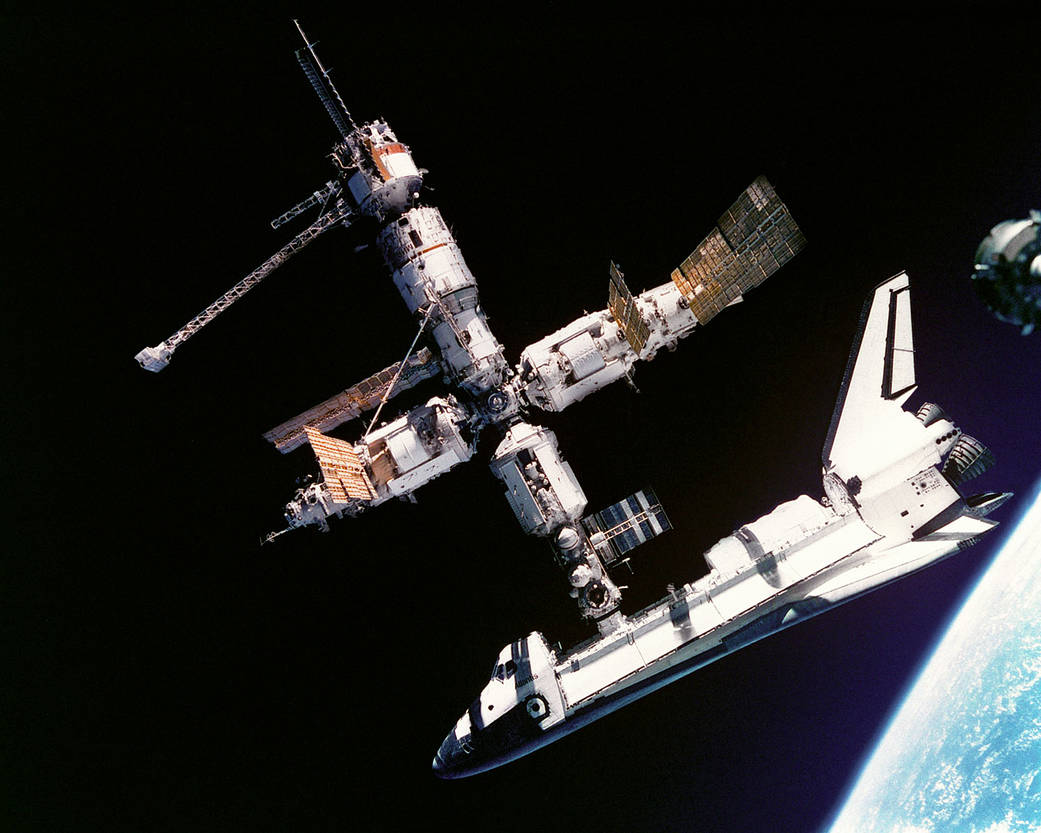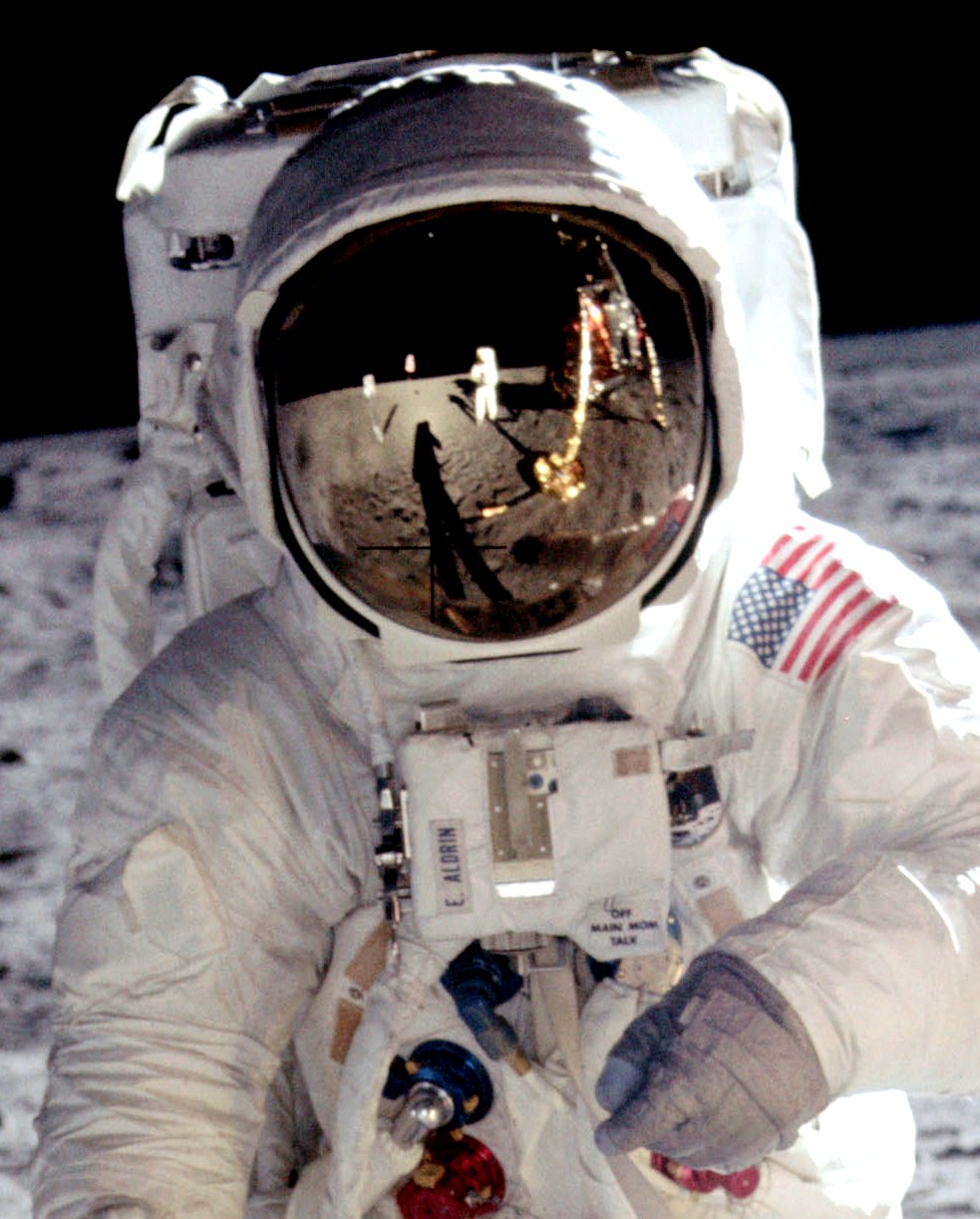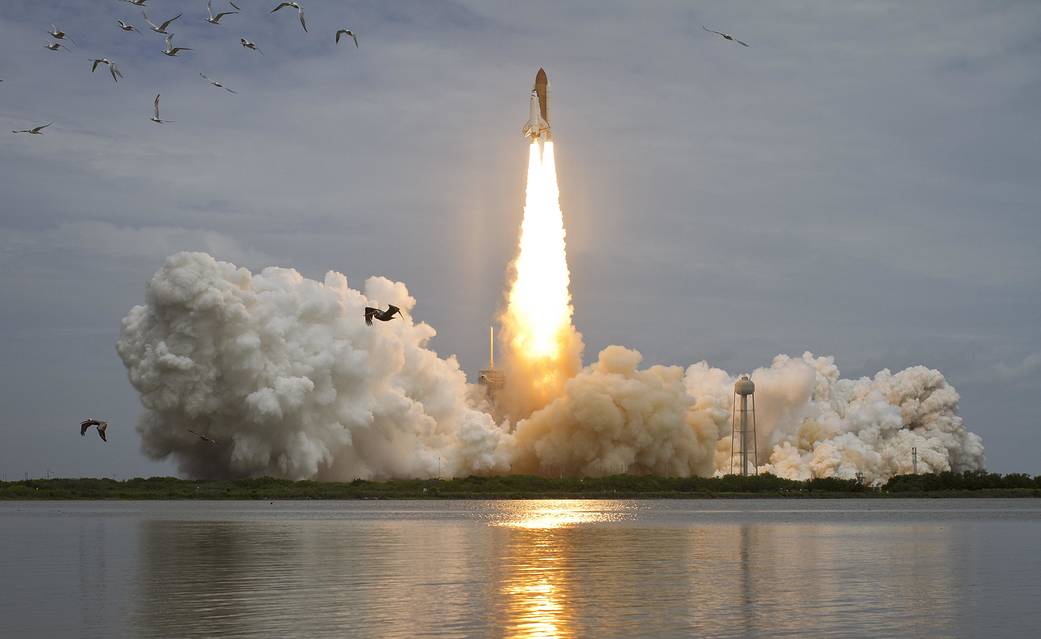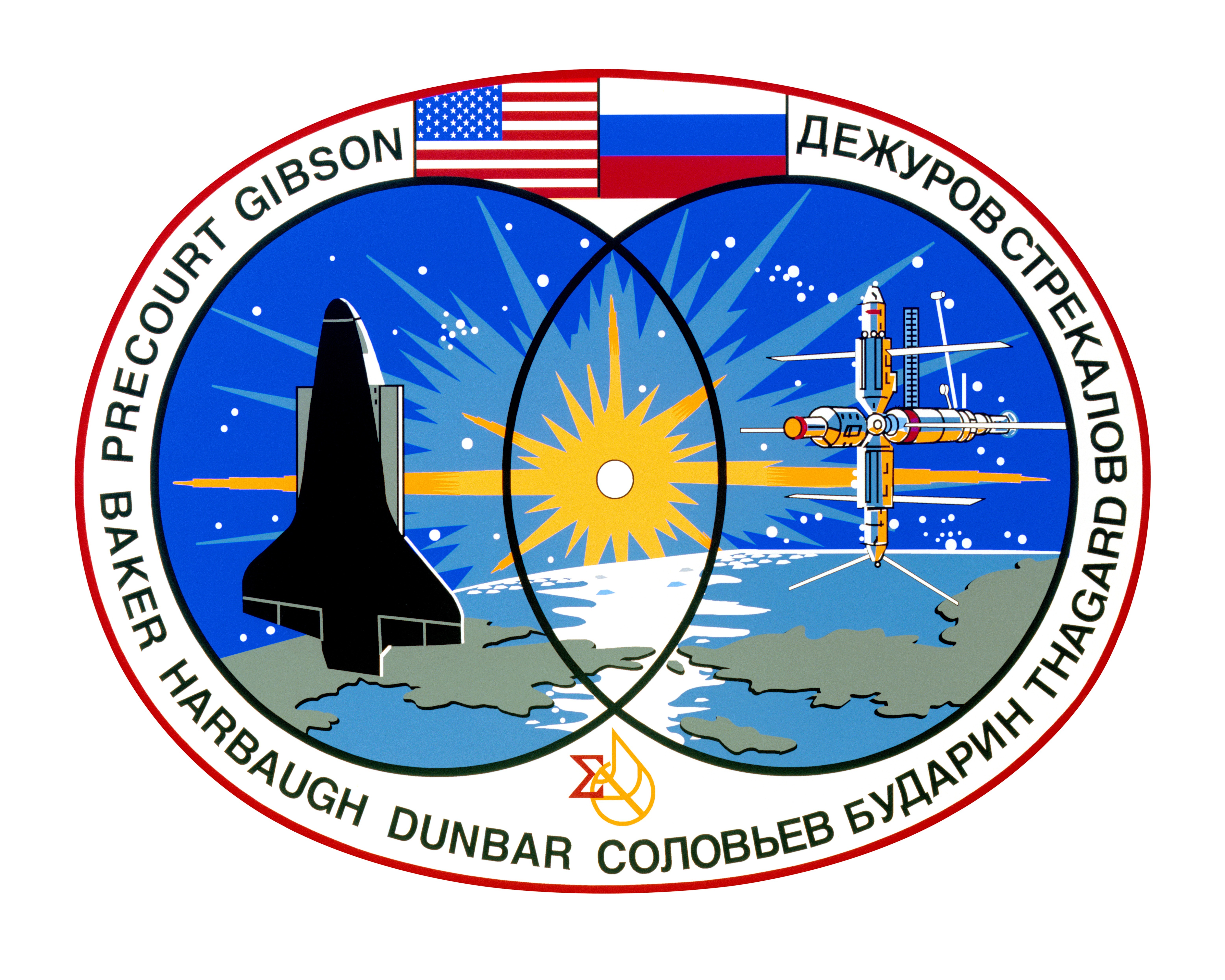
STS-71
STS-71 marked the 100th U.S. human space launch; the first docking of the space shuttle with Mir; the largest combined spacecraft ever in orbit; and the first shuttle changeout of a Mir crew.
Orbiter
Mission Duration
Launch
Landing
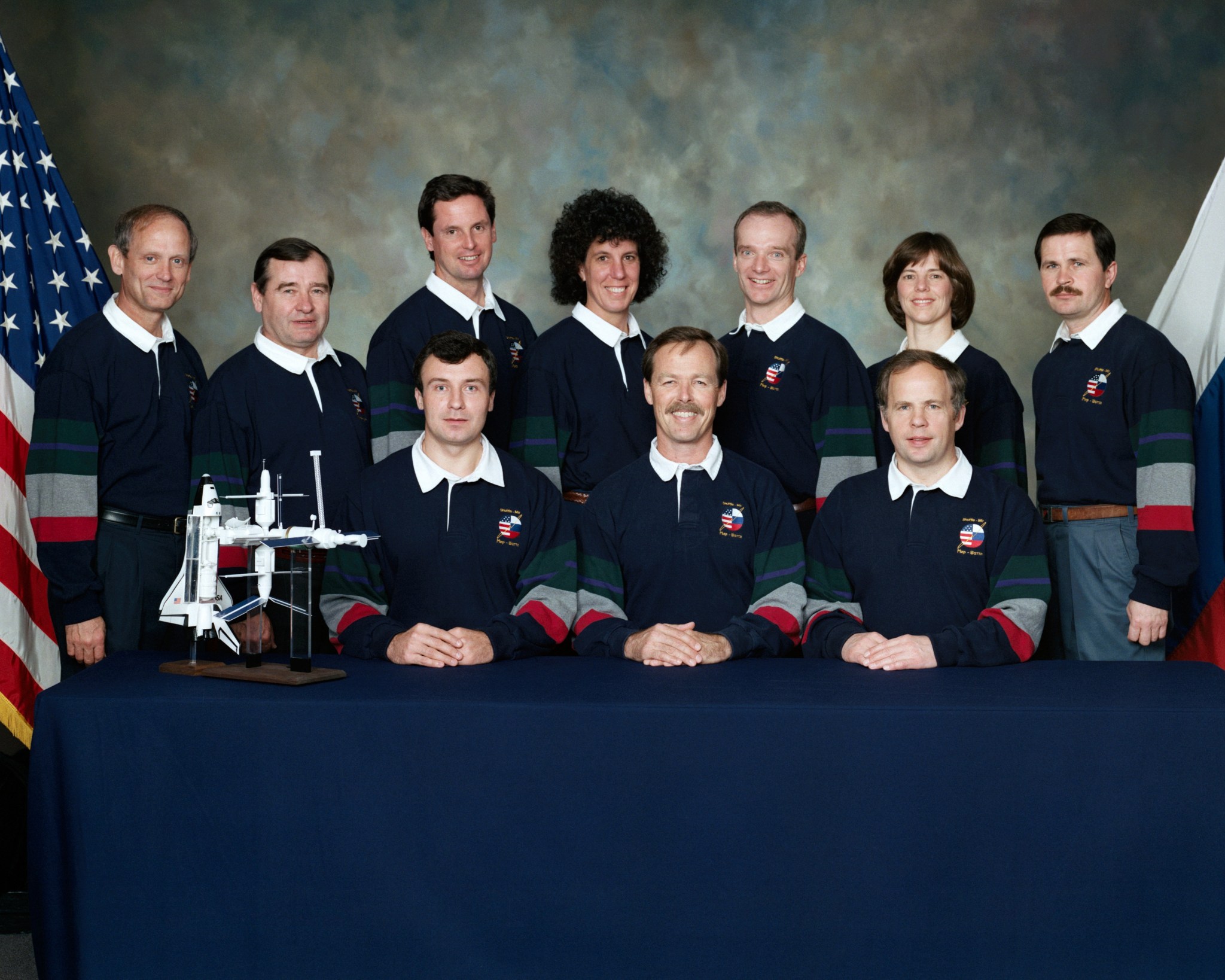
Mission Facts
Mission: First Shuttle-Mir Docking
Space Shuttle: Atlantis
Launch Pad: 39A
Launched: June 27, 1995, 3:32:19.044 p.m. EDT
Landing Site: Kennedy Space Center, Florida
Landing: July 7, 1995, 10:54:34 a.m. EDT
Runway: 15
Rollout Distance: 8,364 feet
Rollout Time: 51 seconds
Revolution: 153
Mission Duration: 9 days, 19 hours, 22 minutes, 17 seconds
Orbit Altitude: 170 nautical miles
Orbit Inclination: 51.6 degrees
Miles Traveled: 4.1 million
Crew
Robert L. Gibson, Commander
Charles J. Precourt, Pilot
Vladimir N. Dezhurov, Mission Specialist
Anatoliy Y. Solovyev, Mission Specialist
Norman E. Thagard, Mission Specialist
Gennadiy M. Strekalov, Mission Specialist
Gregory J. Harbaugh, Mission Specialist
Ellen S. Baker, Mission Specialist
Bonnie J. Dunbar, Mission Specialist
Nikolai M. Budarin, Mission Specialist
Launch Highlights
Launch was originally targeted for late May, but slipped into June to accommodate Russian space program activities necessary for the first space shuttle/Mir Space Station docking, including series of spacewalks to reconfigure station for docking and launch of new Spektr module to Mir containing U.S. research hardware. The launch set for June 23 scrubbed when rainy weather and lightning prevented loading of the external tank earlier that day. A second try on June 24 scrubbed at the T-9-minute mark, again due to persistent stormy weather in central Florida, coupled with short 10-minute launch window. Liftoff reset for June 27, and final countdown proceeded smoothly.
Mission Highlights
STS-71 marked a number of historic firsts in human spaceflight: 100th U.S. human space launch conducted from the Cape; first U.S. space shuttle-Russian Space Station Mir docking and joint on-orbit operations; largest spacecraft ever in orbit; and first on-orbit changeout of shuttle crew.
Docking occurred at 9 a.m. EDT, June 29, using R-Bar or Earth radius vector approach, with Atlantis closing in on Mir from directly below. R-bar approach allows natural forces to brake orbiter’s approach more than would occur along standard approach directly in front of the space station; also, R-bar approach minimizes number of orbiter jet firings needed for approach. Manual phase of docking began with Atlantis about a half-mile below Mir, with Gibson at controls on aft flight deck. Stationkeeping performed when orbiter was about 250 feet from Mir, pending approval from Russian and U.S. flight directors to proceed. Gibson then maneuvered orbiter to a point at about 30 feet from Mir before beginning final approach to station. Closing rate was close to targeted 0.1 feet per second and closing velocity was approximately 0.107 feet per second at contact. Interface contact was nearly flawless: less than one inch lateral misalignment and an angular misalignment of less than 0.5-degrees per axis. Docking occurred about 216 nautical miles above Lake Baykal region of the Russian Federation. The Orbiter Docking System (ODS) with Androgynous Peripheral Docking System served as actual connection point to a similar interface on the docking port on Mir’s Krystall module. ODS located in forward payload bay of Atlantis, performed flawlessly during docking sequence.
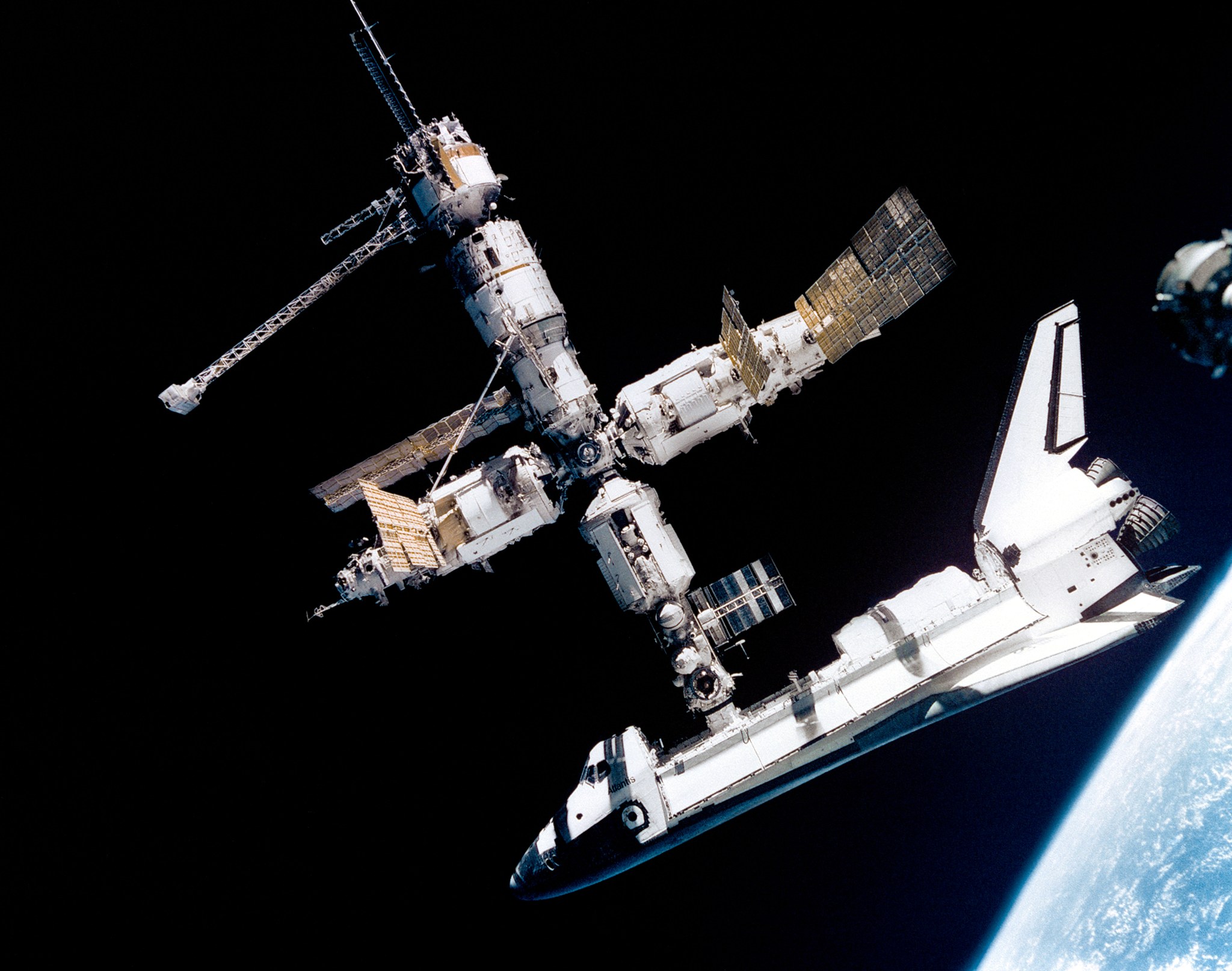
When linked, Atlantis and Mir formed largest spacecraft ever in orbit, with a total mass of almost one-half million pounds (about 225 tons) orbiting some 218 nautical miles above the Earth. After hatches on each side opened, STS-71 crew passed into Mir for welcoming ceremony. On same day, Mir 18 crew officially transferred responsibility for station to Mir 19 crew, and two crews switched spacecraft.
For next five days, about 100 hours total, joint U.S.-Russian operations conducted, including biomedical investigations, and transfer of equipment to and from Mir. Fifteen separate biomedical and scientific investigations were conducted, using Spacelab module installed in aft portion of Atlantis’ payload bay, and covering seven different disciplines: cardiovascular and pulmonary functions; human metabolism; neuroscience; hygiene, sanitation and radiation; behavioral performance and biology; fundamental biology; and microgravity research. Mir 18 crew served as test subjects for investigations. Three Mir 18 crew members also carried out intensive program of exercise and other measures to prepare for re-entry into gravity environment after more than three months in space.
Numerous medical samples as well as disks and cassettes transferred to Atlantis from Mir, including more than 100 urine and saliva samples, about 30 blood samples, 20 surface samples, 12 air samples, several water samples and numerous breath samples taken from Mir 18 crew members. Also moved into orbiter was a broken Salyut-5 computer. Transferred to Mir were more than 1,000 pounds of water generated by the orbiter for waste system flushing and electrolysis; specially designed spacewalking tools for use by the Mir 19 crew during a spacewalk to repair a jammed solar array on the Spektr module; and transfer of oxygen and nitrogen from the shuttle’s environmental control system to raise air pressure on the station, requested by Russians to improve Mir consumables margin.
Spacecraft undocked on July 4, following a farewell ceremony, with Mir hatch closing at 3:32 p.m. EDT, July 3 and hatch on Orbiter Docking System shut 16 minutes later. Gibson compared separation sequence to a “cosmic” ballet: Prior to Mir-Atlantis undocking, Mir 19 crew temporarily abandoned station, flying away from it in their Soyuz spacecraft so they could record images of Atlantis and Mir separating. Soyuz unlatched at 6:55 a.m. EDT, and Gibson undocked Atlantis from Mir at 7:10 a.m. EDT.
Returning crew of eight equaled largest crew (STS-61A, October 1985) in shuttle history. To ease their re-entry into gravity environment after more than 100 days in space, Mir 18 crew members Thagard, Dezhurov and Strekalov lay supine in custom-made recumbent seats installed prior to landing in orbiter middeck.
Inflight problems included a glitch with General Purpose Computer 4 (GPC 4), which was declared failed when it did not synchronize with GPC 1; subsequent troubleshooting indicated it was an isolated event, and GPC 4 operated satisfactorily for remainder of mission.
STS-71
Shuttle News
Retired Space Shuttle Locations
Shuttle Atlantis – Kennedy Space Center Visitor Complex Shuttle Discovery – Steven F. Udvar-Hazy Center Shuttle Endeavour – California Science…
Read the Story